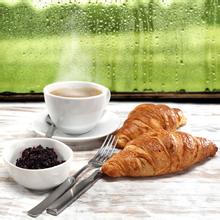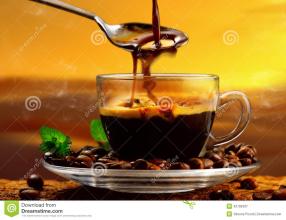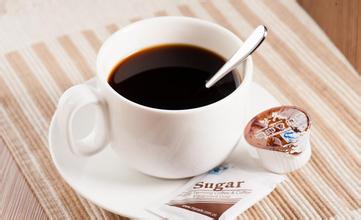Very rich aroma coffee from Atlanta Manor, Jamaica. Introduction to boutique coffee.
For decades after 1872, Jamaica's economy flourished, but social and cultural development was suppressed by the colonial authorities. During the Great Depression, in particular, there was a great deal of discontent among all classes in Jamaica with the declining social conditions. In 1938, workers in Jamaica revolted. Later, the colonial authorities were forced to grant some autonomy to the region. In 1944, Jamaica held its first general election.
In 1958, Jamaica joined the Federation of West Indies, but in 1961 voters rejected the Union Treaty, leading to Jamaica's withdrawal.[1]
Jamaica declared independence on August 6, 1962, and joined the Commonwealth after independence.
Andrew Holness, Jamaica's youngest prime minister, is sworn in October 23, 2011 in Kingston, Jamaica
Jamaica is located in the northwest of the Caribbean Sea, located at 17.42 degrees north latitude 18.31 degrees west longitude 76.11 degrees to 78.22 degrees west longitude, is an island country. [1]Jamaica Island is 234 km long from east to west and 82 km wide from north to south. Its territory covers an area of 11420 square kilometers, of which 10991 square kilometers are land. To the east across the Strait of Jamaica, opposite Haiti, north of Cuba about 140 km. It is the third largest island in the Caribbean and has a coastline of 1220 kilometers. Jamaica is the third largest country in the West Indies after Cuba and Haiti. [2]
terrain
Coastal areas are alluvial plains. For example: Guanea Plain; mountains in the east, hills and limestone plateaus in the middle and west. Karst landforms developed, lack of surface runoff, many caves. [2]
climate
Tropical rain forest climate. May to June and September to November are rainy seasons every year, with the most showers in January and May. December to March of the following year is the dry season, and the weather turns cool. 6-11 The half year at the end of the month is a period of frequent hurricanes and tropical storms, often hit by hurricanes. Rainfall is abundant in the central and northern regions, the climate is generally between 22-32 degrees, and the annual average temperature is 27 degrees. [6]
resources
Jamaica's resources mainly include bauxite, with reserves of about 2.5 billion tons, ranking fourth in the world, of which 1.5 billion tons can be mined and 15 million tons of bauxite can be produced annually, second only to Australia. [2]Other rich resources are copper, iron, lead, zinc and gypsum. Forest area 265,000 km
Coffee beans generally grown at low altitudes and other regions can only be called "Jamaica mountain beans" or "Jamaica washed beans." Compared with Jamaica Blue Mountain, the flavor is much different. However, these producing areas are twice the area of the real Blue Mountain region and account for 75% of the country's production. Therefore, when buying Jamaica coffee, don't think that you have bought Blue Mountain coffee.
Because Jamaica Blue Mountain is so famous, there are fake Blue Mountain coffee on the market, or simply called "Blue Mountain Coffee." Basically, this is a comprehensive product prepared by the store itself. There may be no real Jamaica Blue Mountain bean. The Jamaica government established the Jamaica Coffee Industry Council in 1950. The Jamaica Coffee Industry Board sets quality standards for Jamaica coffee and oversees the implementation of quality standards to ensure the quality of Jamaica coffee. The Commission awards a special official seal to Jamaica's exports of green and roasted coffee and is the world's highest national coffee authority. Those that can represent the origin of Blue Mountain Coffee include Mavis Bank Coffee Factory (M.B.C. F), Blue Mountain Coffee Cooperative Factory (M.H.C.C.T.), Portland Blue Mountain Coffee Cooperative Plant (P.X.X.S.H.), The Coffee Industry Association (Wallenford), Coffee Industry Association (St. John's Peak) and Blue Mountain Coffee (J.A. S) are the six hallmarks of Blue Mountain Coffee as the world's most superior coffee, and Jamaica's weather, geological structure and terrain combine to provide the ideal location. Ridges running through Jamaica extend to the east of the island, and the Blue Mountains rise to more than 2100 meters. The weather is cool, foggy and rainy frequently. Use this rich soil to harmonize with rainwater. Here, coffee trees are grown in a mixed cropping system, alongside banana and avocado trees on terraces. Some small farms are also planted. But even the region's largest planters are small-scale farmers by international standards, many of them smallholders whose families have been working for two centuries. The coffee industry in Jamaica faces a number of problems, such as the impact of hurricanes, increased labour costs and difficulties in mechanising terraces. Many small estates and farms are difficult to rationalize

Important Notice :
前街咖啡 FrontStreet Coffee has moved to new addredd:
FrontStreet Coffee Address: 315,Donghua East Road,GuangZhou
Tel:020 38364473
- Prev

Introduction to the unique acidic taste of San Pedro Manor Coffee, Puerto Rico
On 6 November 2012, Puerto Rico held its fourth referendum. The referendum consists of two rounds of voting. In the first round, Puerto Ricans voted on whether they wanted to change the status quo in their relations with the United States. 1.8 million people were eligible to vote, 65000 gave up the first round of voting, and 54 per cent of those who took part in the vote supported a change of relationship. Later, Puerto Ricans were like
- Next

The flavor and taste characteristics of Nicaraguan Joy Manor Coffee, which is like the faint taste in the wine.
Since July 1927, Augusto. Cesar. Sandino led the people in a guerrilla war against the US occupation, forcing the US military to withdraw in 1933. On February 21, 1934, the Commander of the Nicaraguan National Guard, Anastacio. Somocha. Garcia assassinated Sandino at the behest of US President Roosevelt. He became president in 1936 and has been pro-American for more than 40 years since then.
Related
- Does Rose Summer choose Blue, Green or Red? Detailed explanation of Rose Summer Coffee plots and Classification in Panamanian Jade Manor
- What is the difference between the origin, producing area, processing plant, cooperative and manor of coffee beans?
- How fine does the espresso powder fit? how to grind the espresso?
- Sca coffee roasting degree color card coffee roasting degree 8 roasting color values what do you mean?
- The practice of lattes: how to make lattes at home
- Introduction to Indonesian Fine Coffee beans-- Java Coffee producing area of Indonesian Arabica Coffee
- How much will the flavor of light and medium roasted rose summer be expressed? What baking level is rose summer suitable for?
- Introduction to the characteristics of washing, sun-drying or wet-planing coffee commonly used in Mantenin, Indonesia
- Price characteristics of Arabica Coffee Bean Starbucks introduction to Manning Coffee Bean Taste producing area Variety Manor
- What is the authentic Yega flavor? What are the flavor characteristics of the really excellent Yejasuffi coffee beans?

